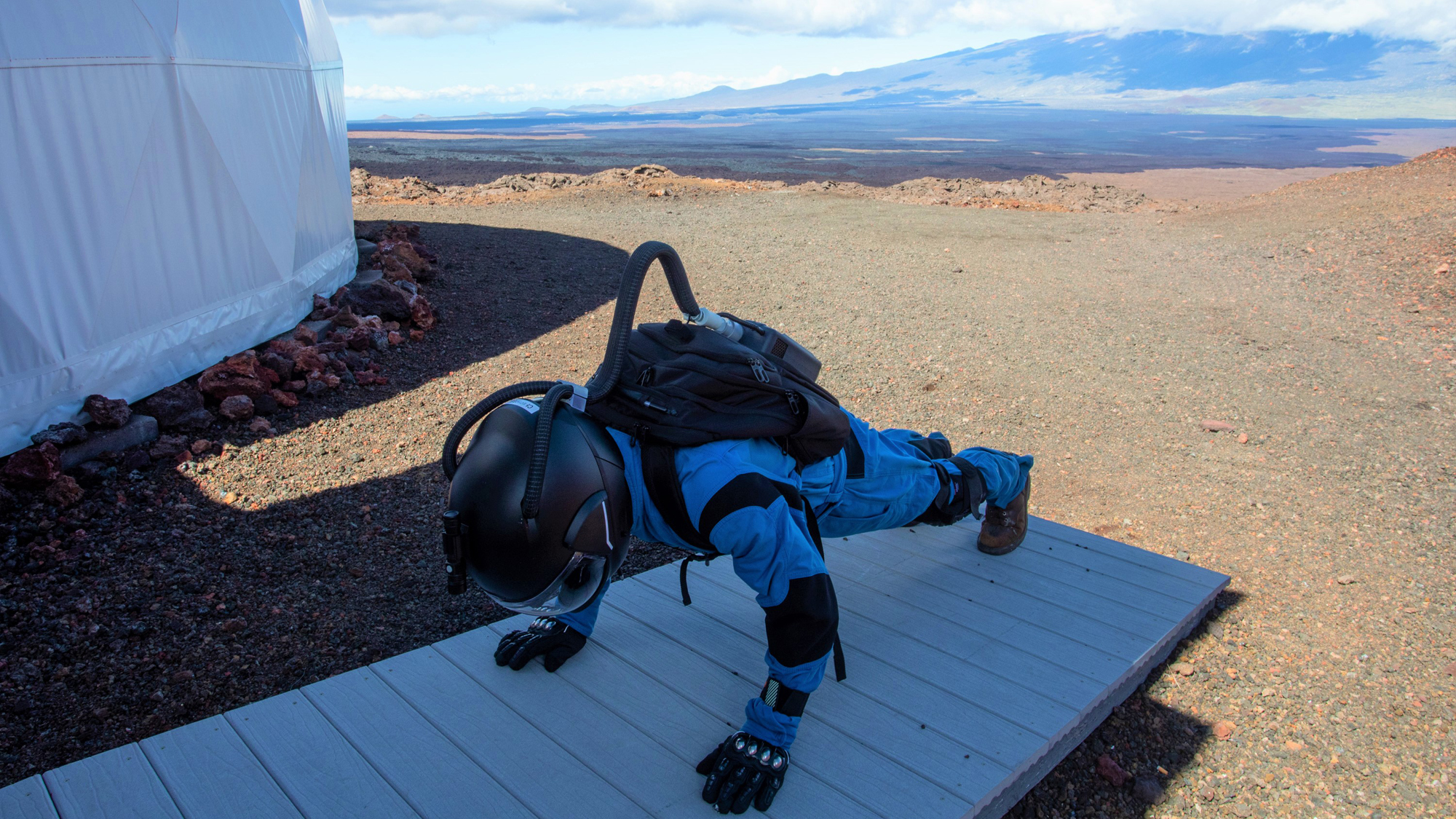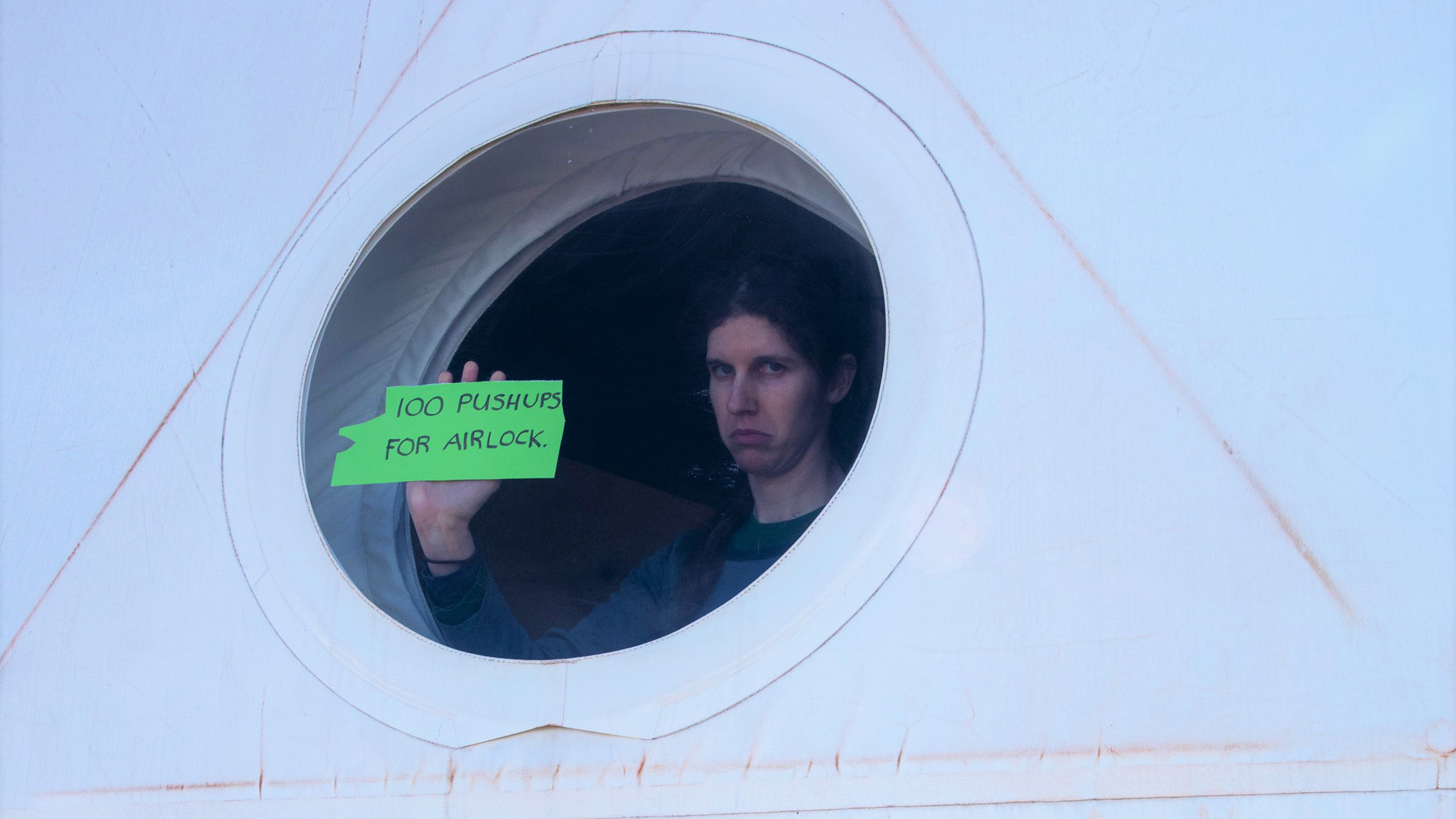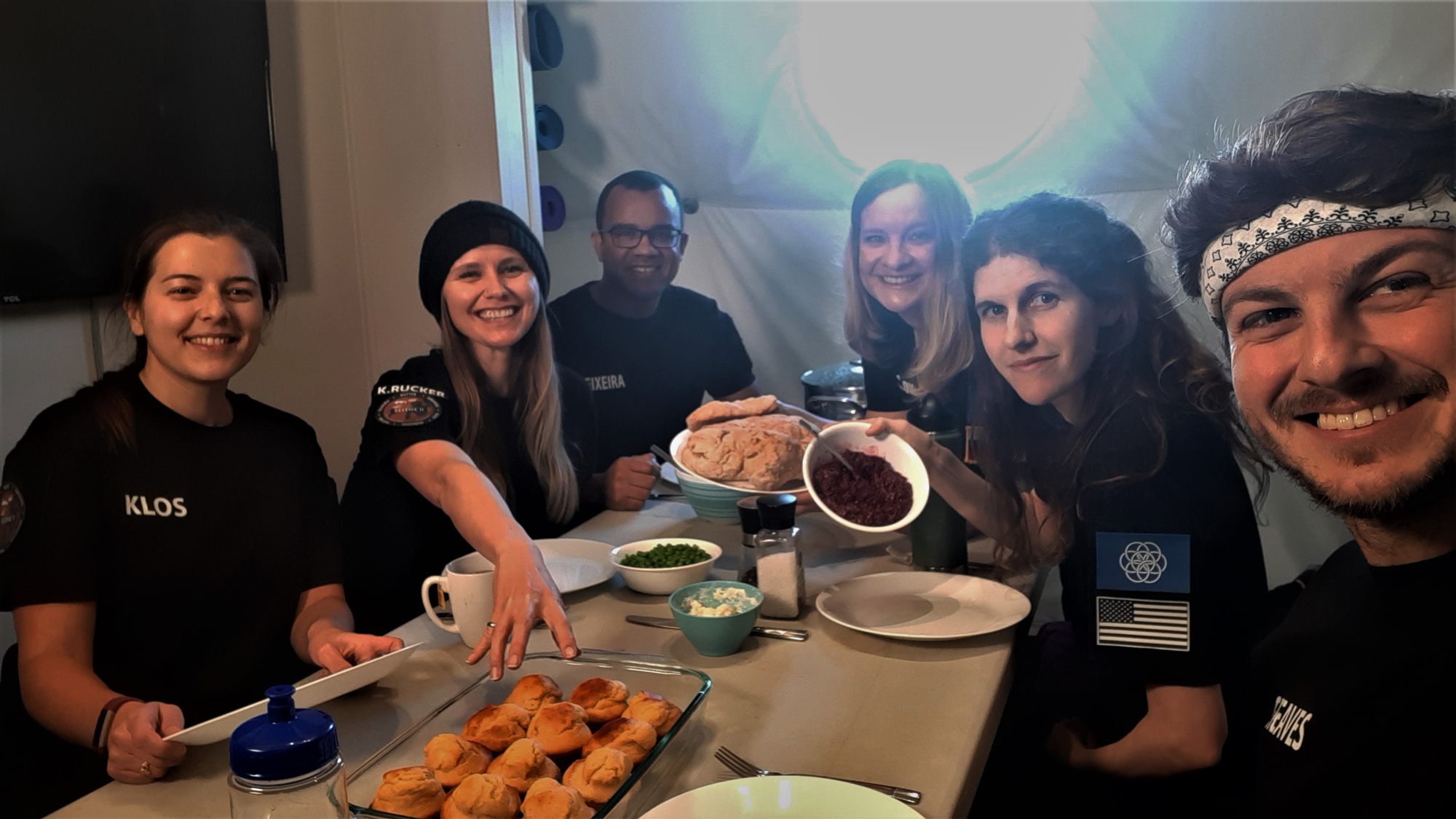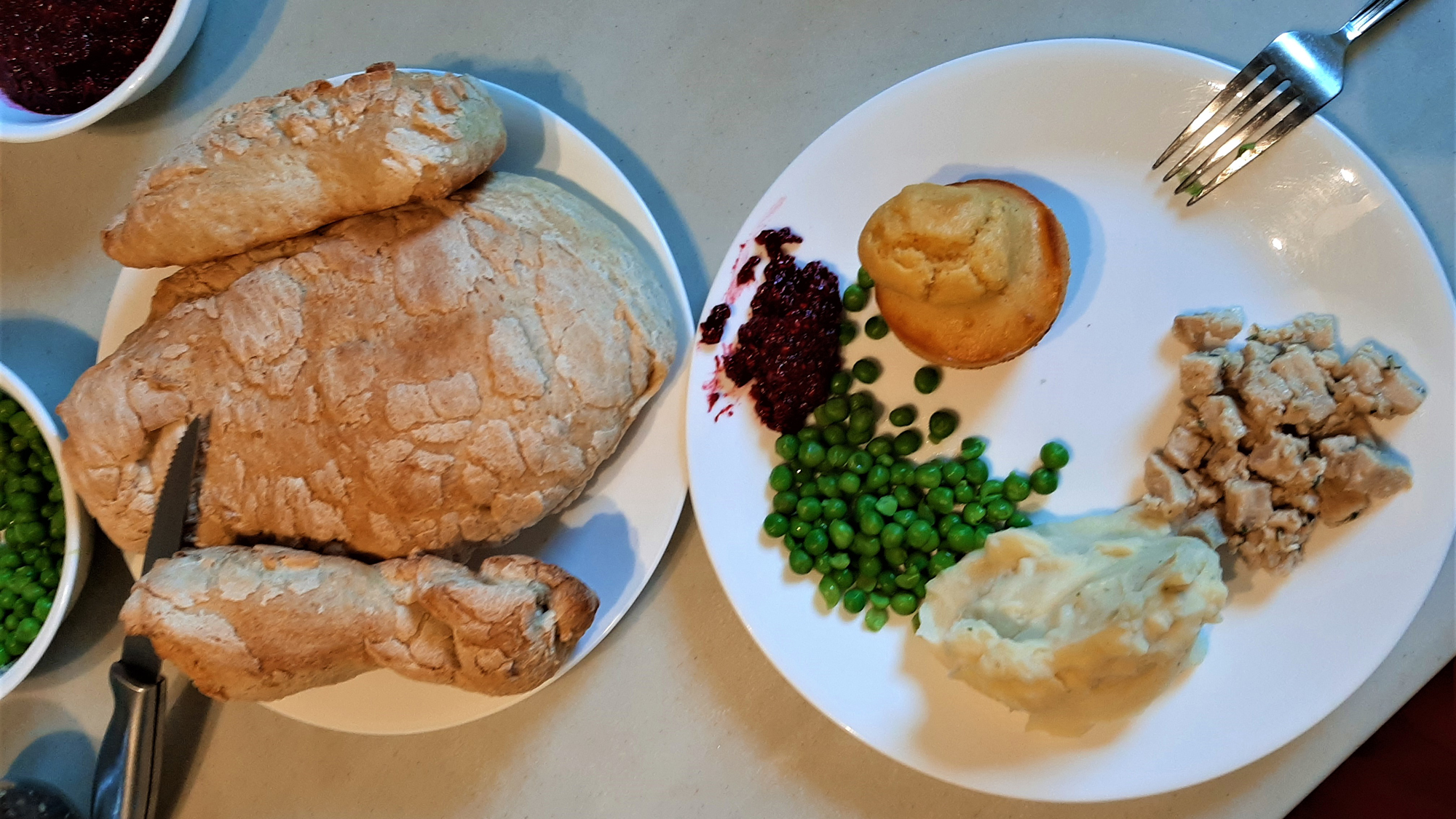Humor saved the day for the Selene II lunar analog mission — Commander's report: lunar day 11
Humor and resourcefulness have saved the crew of analog lunar astronauts during a simulated Moon mission at the HI-SEAS habitat.
Dr. Michaela Musilova is the director of Hawaii Space Exploration Analog and Simulation (HI-SEAS) program, which conducts analog missions to the moon and Mars for scientific research at a habitat on the volcano Mauna Loa. Currently, she is in command of the two-week Selene II mission and contributed this report to Space.com's Expert Voices: Op-Ed & Insights.
Commander's report for the Selene II mission at HI-SEAS
Lunar day 11 (Nov. 28, 2020)
One thing that I didn't expect to be doing on a Friday night on the moon was pushups. One hundred push-ups. It started as a joke when it was getting late and Operations Officer Fabio Teixeira hadn't done his daily exercise yet. "Just do 100 push-ups and I'll let you off," I told him jokingly. Next thing I know, it's almost 10 p.m. and most of the crew decided to join Fabio in doing pushups as moral support. Now, it seems like 100 situps are on the menu for tonight. I'm still trying to figure out if it's a sign that everyone's becoming crazy on the moon (literally becoming "lunatics") or if it's their way to expel excess energy to avoid losing their minds.
While the jury is still out on that topic, another thing that has been helping keep us sane is laughter. Every crewmember is a jokester, so we spend our free moments teasing each other. The moment we all cried from laughter was when we were playing Cards Against Humanity a few days ago. It was a great way to vent out our frustrations, though I didn't expect to hear most of what was said during that game. People sure showed their true colors! For the first time in my life, I got light-headed from laughing too much. It was also a great distraction from the fact that we were all cold, huddled together and bracing for a very chilly night.
We were still struggling through dust storms and our solar panels were not recharging our batteries sufficiently. Every day, we were getting closer and closer to a power blackout despite all our efforts to reduce our power usage to a bare minimum. Living in very cold and dark conditions became the norm.
In fact, The following morning, I held my breath as I got out of bed. I thought to myself, "Do we have power? Will we need to do an emergency spacewalk to turn on our back-up power supply?" I reached for the light in my room and it worked! We still had power! I am so proud of the crew for all their sacrifices and teamwork that saved us from a power blackout. The cherry on top of the cake was when, out of nowhere, the dust clouds cleared and for the first time in days, we were able to see Mons Huygens (a.k.a. Mauna Kea). The whole crew came running to the window to admire an "alien" view.
Related: Powering through challenges of the Selene II lunar analog mission — Commander's report: Lunar day 7
Breaking space news, the latest updates on rocket launches, skywatching events and more!
The clear atmosphere finally allowed us to go on an extravehicular activity (EVA), or moonwalk. Just like our mission, it wasn't exactly a smooth ride. At first, the dust storms hovered around the habitat; sometimes moving a few meters away from us and then rushing back to engulf us in darkness again. I was in the middle of a moon-to-Earth call when my crewmembers rushed to tell me that we have an opening in the dust storm. Next thing I know, we were all in the airlock ready to do some lunar research.
However, the clouds started coming at us the moment we stepped outside the airlock. I instantly went into problem-solving mode and started calculating how much time we had before we would have to return to the habitat. I instructed Crew Engineer Ben Greaves, Crew Bioengineer Lindsay Rutter and Crew Systems Engineer Karen Rucker to start setting up the Hypercubes SPAC (Soil Plant Atmosphere Continuum) geoweather station. At the same time, I helped Fabio start up his drone that he and Crew Journalist Cassandra "Cassie" Klos operated from inside the habitat. The clouds moved in even closer by the time we were done. As I was about to call the end of the EVA, we suddenly found ourselves in the eye of the dust storm.
This bought us a few more minutes, so I told Karen that she could go test her amateur radio-communications technologies on the ridge above the habitat. I also encouraged Lindsay to collect her astrobiological samples in mini lava tubes near the habitat. Then, we heard from HabCOM (Habitat Communicator) Cassie that the drone detected a clear path for our EVA beyond the vicinity of the habitat. In the end, I was able to train the crew on the geology of our surroundings just in time for the dust storms to close in on the habitat again.
By Thanksgiving Day, the whole crew was thankful for a number of things: that we have each other, we make each other laugh, we help one another, we have loving friends and family on Earth, and that the weather was favorable enough for us to go on our first lava tube EVA. Cassie was able to get some beautiful fine art photography pictures in the caves, while I helped Lindsay collect more astrobiological samples. Fabio used the time efficiently to analyse the lava tube through UV scans and LIDAR.
The highlight of the day, for me, was our Thanksgiving feast. In a coordinated effort, most of the crew baked and cooked a number of dishes that made our lunar meal be nearly as fulfilling as festive meals back on Earth. In full disclosure, our turkey was actually turkey-shaped bread and the meat on the table was freeze-dried chicken. No matter, it brought huge smiles to our faces and it definitely satisfied our tummies as well. I also surprised the crew with some freeze-dried ice cream. It's the least that I can do to thank them for being such good team-players. Many thanks to everyone who has been supporting us from Earth as well! Our sincere greetings to you all.
Related: How NASA tech helped make your Thanksgiving food safe (and your family Zoom sessions, too)
On that note, I'm realizing that it's day 11 and our mission together on the moon is coming to an end. While this realization is making me sad, I'm also very happy that the whole crew is progressing so well with their research projects. They were able to accomplish most of their project milestones despite all the challenges the dust storms threw our way.
As for me, I was mostly concerned with the crew successfully achieving their goals for this mission. Time permitting, I will continue with collecting samples for my NASA Goddard astrobiology collaboration. Otherwise, it'll have to wait for the upcoming mission starting next week.
Follow Michaela Musilova on Twitter @astro_Michaela. Follow us on Twitter @Spacedotcom and on Facebook.
Follow all of the Expert Voices issues and debates — and become part of the discussion. The views expressed are those of the author and do not necessarily reflect the views of the publisher.
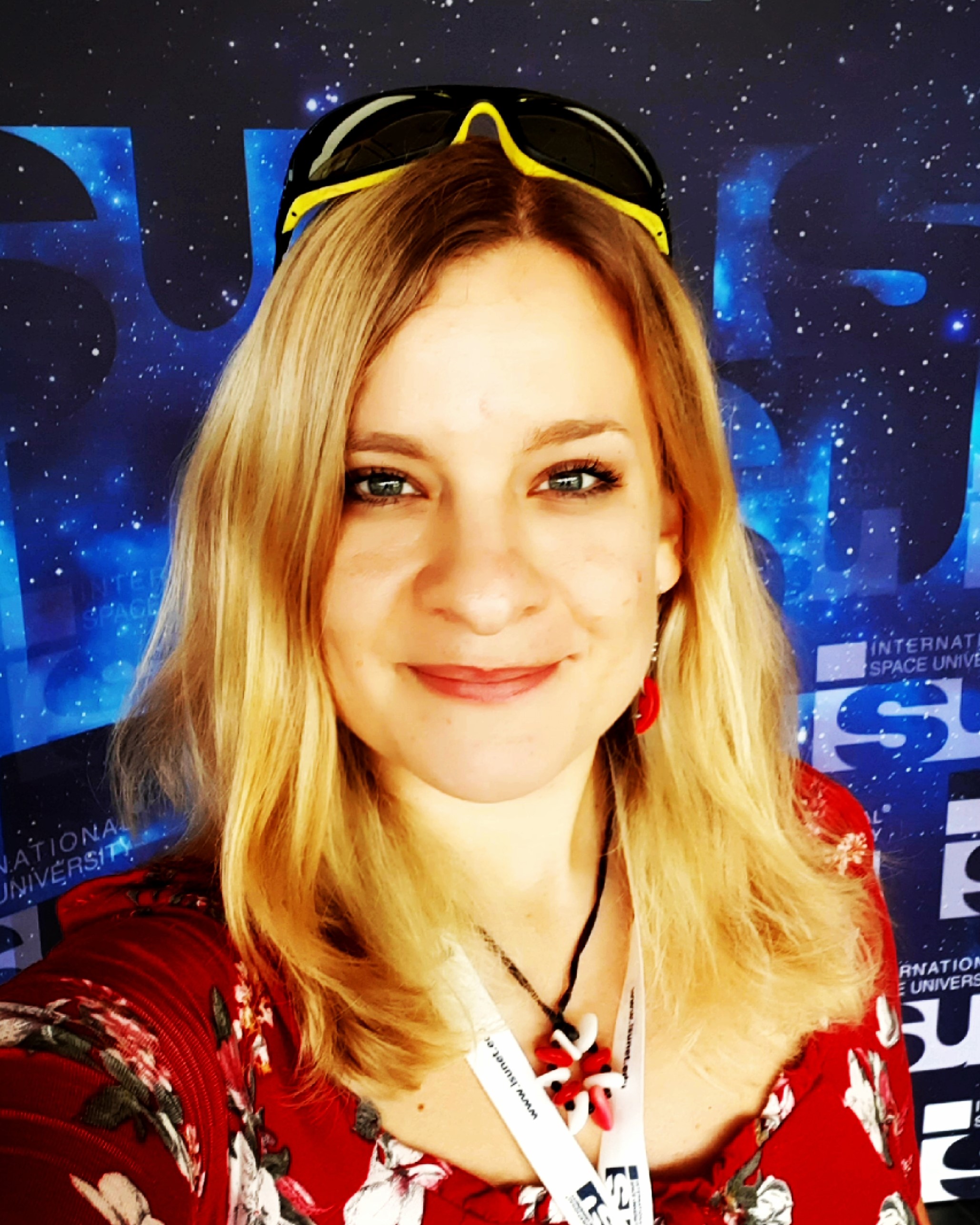
Dr. Michaela Musilova is an astrobiologist with a focus on life in extreme environments. She has a PhD degree from the University of Bristol and is a graduate from the International Space University's (ISU) Space Studies Program. Michaela's space research experience includes working at the NASA Jet Propulsion Laboratory, University of London Observatory, Canada-France-Hawaii Telescope, on NASA's and the U.K. Space Agency's MoonLite project, being an analogue astronaut and Commander of numerous simulated missions to the moon and Mars at the HI-SEAS station in Hawaii, and at the Mars Desert Research Station in Utah. Michaela is currently the Director of HI-SEAS, as part of the International MoonBase Alliance. She is also a visiting Professor at the Slovak University of Technology, Vice-Chair of the Slovak Organisation for Space Activities, Adjunct Faculty at ISU and the Senior Research Adviser for Mission Control Space Services Inc.
She has received numerous prizes and grants, including the Emerging Space Leaders Grant from the International Astronautical Federation (2016) and the Women in Aerospace – Europe Young Professional Award (2016), and she was selected as one of the most promising 30 under 30 by Forbes Slovakia (2015). Michaela is also actively involved in the Duke of Edinburgh's International Award, as a patron of the program in Slovakia and an Emerging Leader Representative for Europe, Mediterranean and Arab states. Furthermore, she enjoys participating in STEAM outreach activities from teaching at schools, giving public presentations, to working with the media and more, as well as encouraging people to pursue their dreams. For instance, she is an Advisory Board Member of the STEM Punks immersive programs for students and teachers.

